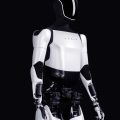
Smart wearable company Ultrahuman has just released its new Home monitor, a device promising to optimize your home environment for better health. Priced at a hefty $549, it boasts the ability to track air quality (including fine particulate matter, carbon monoxide, and various pollutants), temperature, noise levels, and light exposure (across the spectrum from UVA to infrared). The device aims to help users understand how their environment impacts sleep and overall well-being.
For those who already own an Ultrahuman Ring, a neat ‘UltraSync’ feature offers insights into how environmental factors might be affecting heart rate, sleep patterns, and recovery. For example, the system might alert you if noisy nights are disrupting your rest. However, there’s a significant catch.
The Ultrahuman Home, while impressively comprehensive in its data collection (via a mobile app, of course – it’s screen-free!), doesn’t actually *do* anything to improve the conditions it measures. It’s essentially a very expensive sensor suite. There’s no integration with smart home systems, no automated adjustments, and no built-in solutions like air purification or dehumidification. While Ultrahuman emphasizes that the data remains solely with the user, the lack of actionable control makes the high price tag difficult to justify.
Considering the cost, it’s hard to ignore the readily available alternatives. Similar functionality, though perhaps with less detailed metrics, can be found in far more affordable devices from companies like Ikea, Amazon, and SwitchBot. These offer comparable air quality monitoring at a fraction of the price, often with the added benefit of smart home integration for automated responses to detected issues. The Ultrahuman Home, therefore, feels less like a helpful tool and more like an expensive way to potentially increase your anxiety levels about your home environment – a point made by recent articles exploring the link between health trackers and heightened stress.
In short, Ultrahuman’s Home monitor presents a compelling data set but falls short on practical application. While the technology is impressive, the price point is simply unsustainable for a device that only monitors and doesn’t actively improve your living space. Unless you have a compelling need for hyper-specific environmental data and are already invested in the Ultrahuman ecosystem, there are more affordable and arguably more useful alternatives on the market.










